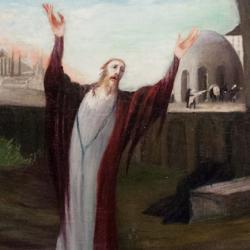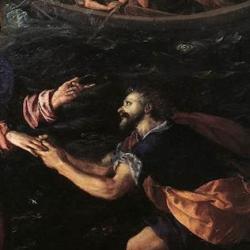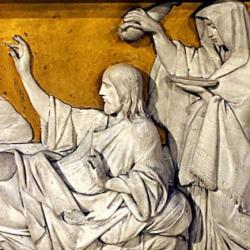What is the cross? For Matthew, the cross is the climax of the history of Israel as that history is relived by Jesus.
Matthew presents Jesus as the teacher of Israel, and accordingly his gospel is organized around five large sections of teaching: the sermon on the mountain, Jesus’ instructions to His disciples, the parables of the kingdom, Jesus’ teaching on discipline and forgiveness, the Olivet Discourse.
As he shows that Jesus is the great teacher, Matthew also shows that Jesus is Israel in person, reliving the history of His people. Jesus is the greater Moses, who stands on a mountain to teach His disciples about a righteousness that surpasses the righteousness of the scribes and Pharisees. Jesus is the greater Joshua, who sends His disciples into the land to conquer Satan, sickness, and death. Jesus is the greater Solomon, speaking the wisdom of the kingdom in parables. Jesus is the greater Jeremiah, announcing the final lawsuit against Israel and warning that the temple will be destroyed.
The cross is the climax of this history. After Jesus has lived through exodus and Sinai; after His disciples have conquered the land; after He has spoken many things in parables; after He has condemned the temple and priesthood; after He has been rejected by the Jews – He goes out of the camp to be crucified. At the cross, Jesus relives Israel’s exile in its most intense form, as He is separated from His Father: My God, my God, why have you forsaken me?
Exile is not the end of the story of Israel, and the cross is not the end of the story of Jesus. After the exile comes the return; after the cross comes the resurrection. So: What is the cross? At the cross, Jesus is separated from the Father to reunite us to the Father. He is taken from the land so that we can return to it. At the cross, Jesus endures the curse of exile in order to overcome it.















